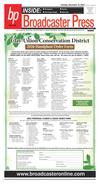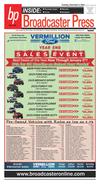080718_YKBP_A13.pdf





Broadcaster Press 13
August 7, 2018 www.broadcasteronline.com
Myths And Misconceptions
About Autism Spectrum Disorder
Autism spectrum
disorder, or ASD, is a
class of neurological
conditions present from
early childhood and is
often identified through
difficulty communicating, using language and
understanding abstract
concepts. The organization Autism Speaks says
that an estimated one
out of 42 boys and one in
189 girls are diagnosed
with autism in the United
States. Autism is now
diagnosed in roughly one
out of every 68 children
in Canada, and has
become the fastest growing and most commonly
diagnosed neurological
disorder in that country.
ASD is estimated to
affect tens of millions
of people worldwide.
But even though ASD
is widely recognized,
studied and discussed,
myths and misconceptions about the disorder
continue to circulate.
Shedding light on how
ASD can help caregivers,
peers and anyone who
routinely interacts with
individuals who fall on
the spectrum.
ASD is not a single
disorder.
Although autism
and ASD are often used
interchangeably, these
names do not define one
specific disorder. ASD is
now an umbrella term
that includes autism,
Asperger syndrome,
pervasive developmental
disorder, childhood disintegrative disorder, and
Rett syndrome. ASD is
often perceived through
communication deficits
that can include misinterpreted or nonverbal
interactions. Individuals
also may have challenges
in bonding/friendship
development.
People with ASD can
understand and express
emotion.
Although communication troubles may be
present, those with ASD
can and do feel emotions. But they may not
be able to express these
emotions the same way
as others do. Also, just
because someone has
ASD doesn’t mean he or
she is unable to understand the emotions of
others. Rather, the person may need firm and
direct indications of how
another person is feeling
to understand. Reading
body language or tone
of voice alone may be
inadequate to someone
with ASD. School-aged
children can learn from
this, recognizing that
someone with ASD may
want to have friends and
socialize, but he or she
may not know how to
facilitate these engagements.
ASD does not produce
carbon-copy symptoms
Characteristics of
ASD can vary widely
from person to person.
One person’s limitations
may not be present in
another.
ASD is not just a children’s disease.
There is no cure for
ASD, and symptoms may
not be reversible, which
means that autism is a
lifelong condition. Children who are diagnosed
will grow into young
people and adults with
autism. Many treatments
and therapies are geared
toward early intervention, but adults can benefit from continued work
as well. Adults with ASD
can be successful and
live independent lives.
Autism spectrum
disorder is more prevalent than ever. However,
despite the recognition
of ASD, many people
do not understand the
nuances involved with a
diagnosis.
Organized Lockers Keep
Students On Track
School is often a
student’s home away
from home. Spending
an average of six hours
per day and five days a
week, 10 months a year
in the classroom or on
campus, students may
feel as though they spend
more time roaming school
grounds than they do
relaxing at home.
Lockers can be havens
for students, giving them
a place to store supplies
and personal items and
meet up with friends each
day. Organized lockers
may help students handle
all of their responsibilities
more capably.
Developing organizational habits early on is a
worthwhile lesson for students, helping them avoid
tardiness and keep their
assignments in order.
Students typically
keep a number of items
in relatively small lockers, which only makes it
Vermillion
more challenging to stay
organized. The following
tips can help students
stay organized this school
year.
• Make the most of
locker space. Space is
limited, but with some
additions, lockers can be
that much more functional. Insert a removable
shelf to double the space
available. Metal shelves
are preferable, but adjustable plastic ones can be
effective if they aren’t
overloaded.
Install adhesive hooks
on the door or an inside
wall of the locker to hang
clothing, bags and more.
Invest in hooks that can
hold a lot of weight.
• Organize books by
class. Keep books organized by class schedule
so that books can be
grabbed quickly during
period changes. Put folders and notebooks with
the textbooks so that
all related items will be
together.
• Add some personality. The Container Store
suggests adding color and
function with magnetic
accessories to liven up
the space. Dry-erase calendars, pencil/pen containers, a mirror, cubbies
for notes and other tools,
and magnetic picture
frames are some ideas.
• Keep on top of trash.
Routinely clean out the
locker if things become
unruly. Tucking a small
waste pail in the bottom of the locker can be
handy for taming garbage.
Otherwise, periodically
clean your locker during
after-school hours, emptying it of old assignments
and taking clothes home
for laundering.
Keeping an organized
locker can help students
thrive in the classroom.
Metro Creative Connection
A+
525 W. Cherry St.
605-624-5574
Your 24 Hour Grocery Store
Metro Creative Connection
Make Sure to Schedule Your Child’s
Dental Check Up Before School Starts
Wake up
with
Corner of W. Cherry & Stanford
605-624-8050
Convenience at your back door - 24/7
Hot Coffee • Hot Chocolate • Lattee’s
• Juice • Pop • Breakfast Pizza
• Breakfast Sandwiches • other great Breakfast snacks
Or try one of our energy drinks morning, noon or afternoon to keep you going
Dental cleanings and exams are important for kids’ smiles,
especially before starting a new school year!
Dr. Matthew Knutson
Dr. Richard Knutson
605-624-6291
www.KnutsonFamilyDentistry.com






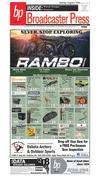
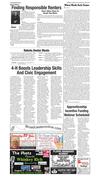
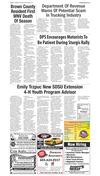
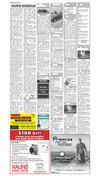
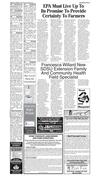

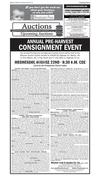
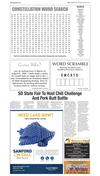

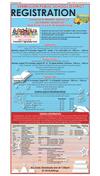
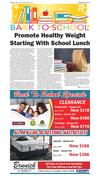

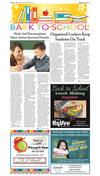

 Previous Page
Previous Page



